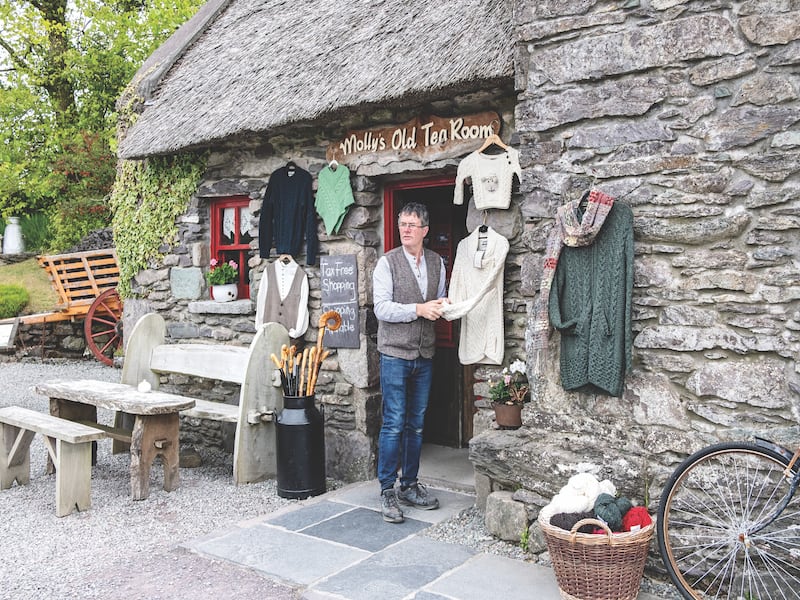Spending time in Ireland — both the Republic of Ireland and Northern Ireland — is an extraordinary experience. In Ireland can be found wonderful historic places, beautiful and striking scenery, and delightful and friendly people with wonderful smiles. There have been times of famine and violence in both ancient and more modern times, but at present, there is peace between the traditionally green Catholics and the traditionally orange Protestants.
Our recent visit to Ireland was a cruise around the country that began and ended in Dublin. Cruising is a relaxing and luxurious way to travel, and the cruise we experienced on our ship, Oceania Cruises’ Nautica, was no exception. A smaller ship with about 650 passengers, Nautica has all of the amenities needed to facilitate comfortable travel, from 24-hour cappuccino and cafe latte machines to delicious food in various restaurants, Internet access, a fitness center, a casino, bars, lounges, and a pool. Afternoon tea, nightly entertainment and much more are provided as passengers are catered to and indulged. Another highlight of cruising is the interesting people with whom you interact.

Dublin is a wonderful old city whose highlights include the Book of Kells at Trinity College and the Reconciliation Door in St. Patrick’s Cathedral. The former is a manuscript of the four Gospels that was copied by monks in the ninth century and that has ornate “illuminated” pages. The plaque beside the wooden Reconciliation Door in the cathedral explains that the generations-long feud between two lords in the 1400s was resolved when one lord cut a hole in the door and extended his sword hand into the hole. The plaque also provides a symbolic application for this story, pointing out that Jesus can be seen as the Reconciliation Door between God and us.
Our cruise, like most cruises, offered multiple excursions that could be purchased for every port, but it also offered the opportunity for independent exploration. After Dublin, our next stop was Waterford, long identified with crystal, and then Cork, close to Blarney Castle, with its iconic stone to be kissed.
At Bantry we took a tour up and through the extraordinary scenery of the Caha Mountains, with their craggy granite outcroppings and unfenced pastures. The shared pastures are called “commonage,” a term derived from “common acreage.” Sheep owners pay a yearly bounty for the use of the grazing land, marking their sheep with paint. We also stopped in a couple of villages: Kenmare, for tea and scones, and Castletownbere, to see MacCarthy’s Bar, made famous by the story of Dr. MacCarthy, the pub’s founder’s grandson, who was saved from death in a Japanese prison camp near Nagasaki when the planes flew over and dropped the atomic bomb.

Galway was next on the agenda, and among the excursions offered were Connemara and the spectacular Cliffs of Moher. We then sailed around to Northern Ireland, stopping first in Londonderry. The excursion we chose took us to a stone ring fortress from the 1100s and a recreated famine village. Others went to Giant’s Causeway, a World Heritage Site.
Belfast, where the Titanic was built, has a tourist attraction called the “Titanic Experience.” Belfast is also where we learned more about “the Troubles,” the term the Irish use to describe the conflict that has disrupted and destroyed so many lives since the late 1960s. It was interesting to hear the history from the Orange side, as we had previously heard it from the Green perspective. Driving past a 30-foot-high border wall separating the sides was a sobering time.
As in all of the ports, there were several other excursions from which to choose. Belfast is a large, bustling city with a plethora of options to explore.
Our final stop was at Douglas on the Isle of Man. One of the excursions was rides on two Victorian electric trains. Another was a visit to the National Folk Museum, with its authentic displays of the traditional local culture.
There have been times in Ireland when there were very few smiles in Irish eyes, but we were blessed on our cruise to see many Irish smiles. And whether you have Irish blood flowing in your veins or not, spending time in Ireland “sure ‘twill steal your heart away.”
